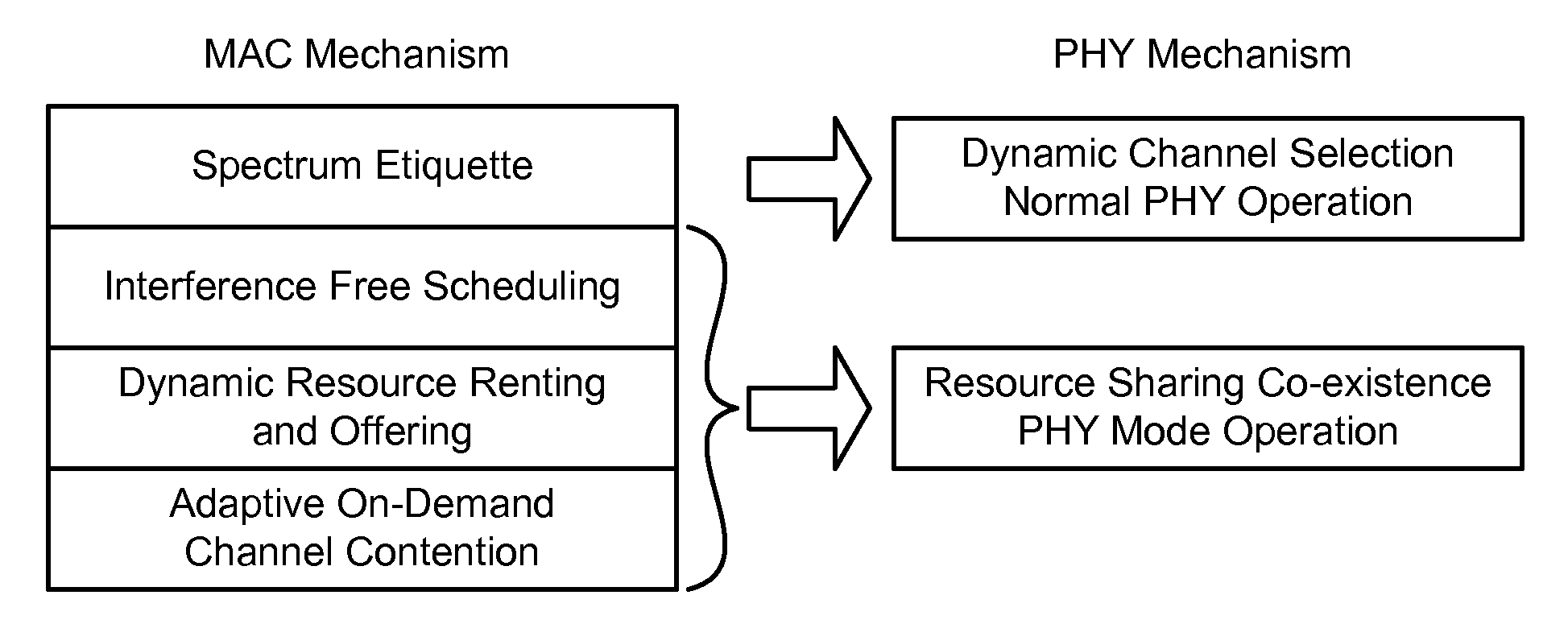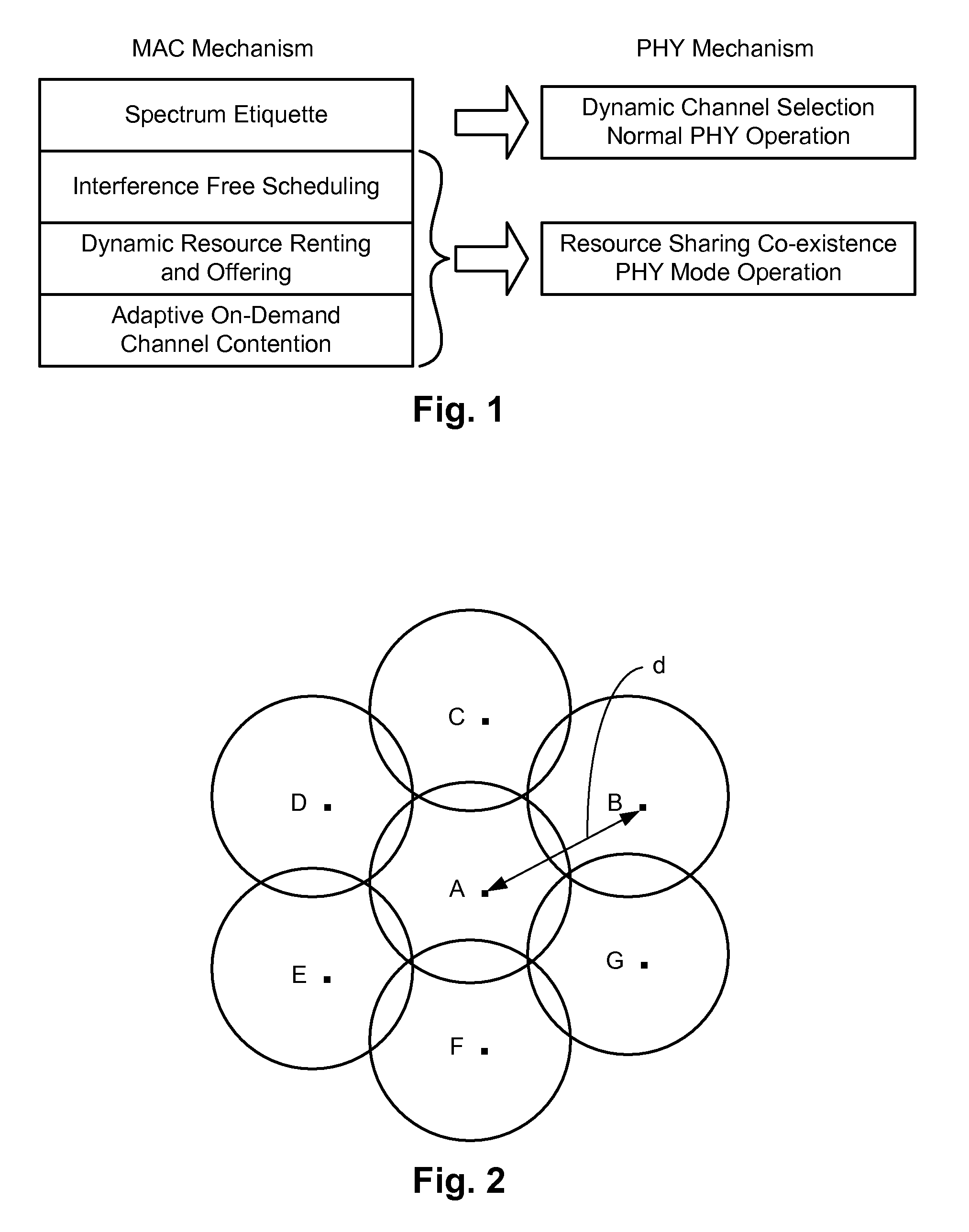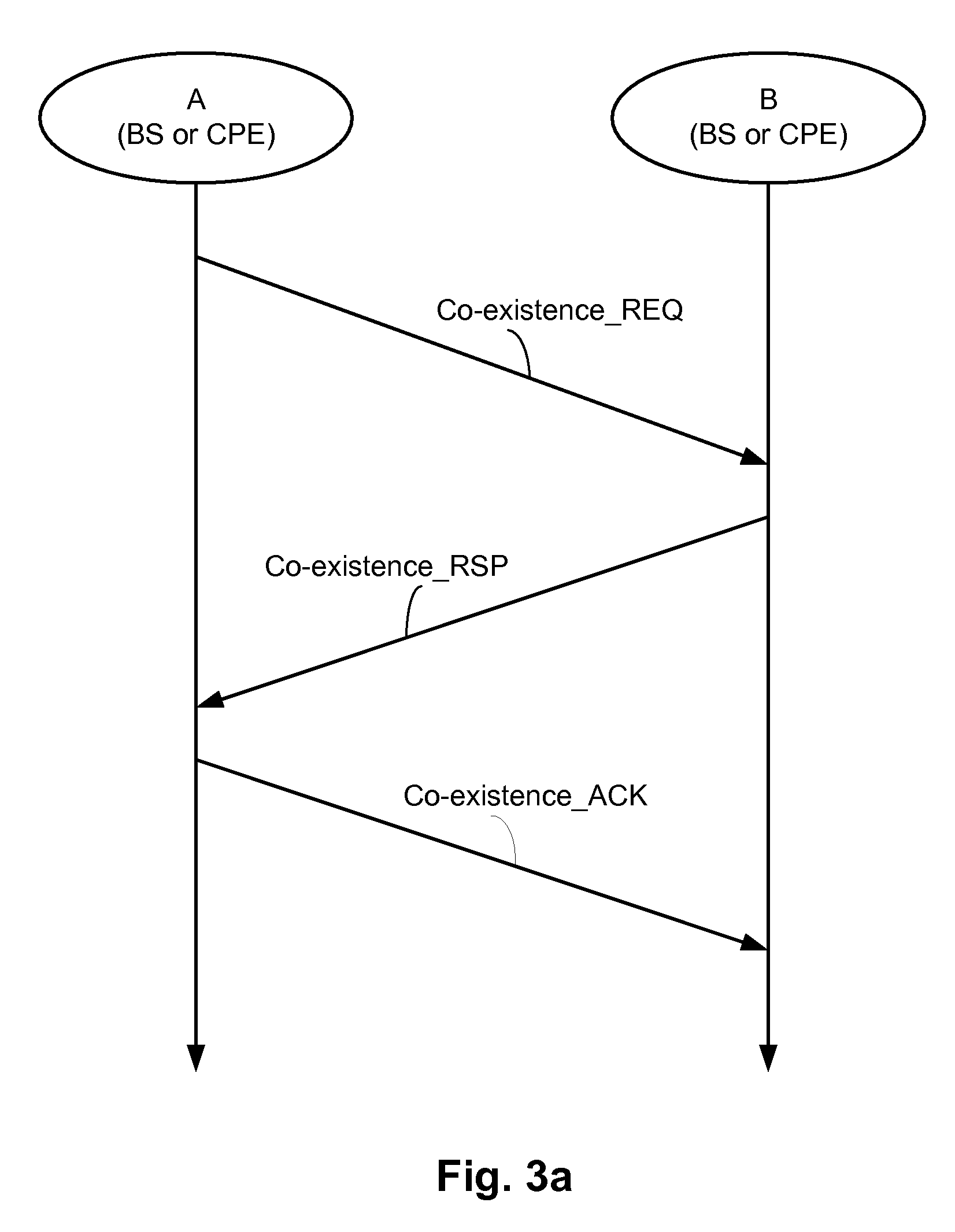Resource allocation in co-existence mode
a technology of coexistence and resource allocation, applied in the field of communication systems, can solve the problems of local unused spectrum, tv channel often going unused, and large and increasing amount of spectrum that is allocated to broadcast services,
- Summary
- Abstract
- Description
- Claims
- Application Information
AI Technical Summary
Benefits of technology
Problems solved by technology
Method used
Image
Examples
Embodiment Construction
[0026]Techniques are disclosed that allow for resource allocation during situations requiring co-existence in cognitive radios. Even under situations of bandwidth scarcity, the techniques allow various users to be guaranteed quality of service (QoS) by proper distribution and allocation of resources. The techniques allow legacy wireless communication systems to operate in a normal mode and a co-existence mode. In the co-existence mode of operation, sub-frame creation, sharing and zone formation schemes are implemented that enable the existing underlying frame structure to remain intact and inter-operable with the legacy systems and at the same time, provide a guaranteed QoS. The zones effectively create partitions in space, time and frequency, which result in interference avoidance and allow various users in neighboring cells to communicate on the same frequencies.
[0027]General Overview
[0028]The self-coexistence techniques described herein can be embodied, for example, in an 802.22 ...
PUM
 Login to View More
Login to View More Abstract
Description
Claims
Application Information
 Login to View More
Login to View More - R&D
- Intellectual Property
- Life Sciences
- Materials
- Tech Scout
- Unparalleled Data Quality
- Higher Quality Content
- 60% Fewer Hallucinations
Browse by: Latest US Patents, China's latest patents, Technical Efficacy Thesaurus, Application Domain, Technology Topic, Popular Technical Reports.
© 2025 PatSnap. All rights reserved.Legal|Privacy policy|Modern Slavery Act Transparency Statement|Sitemap|About US| Contact US: help@patsnap.com



